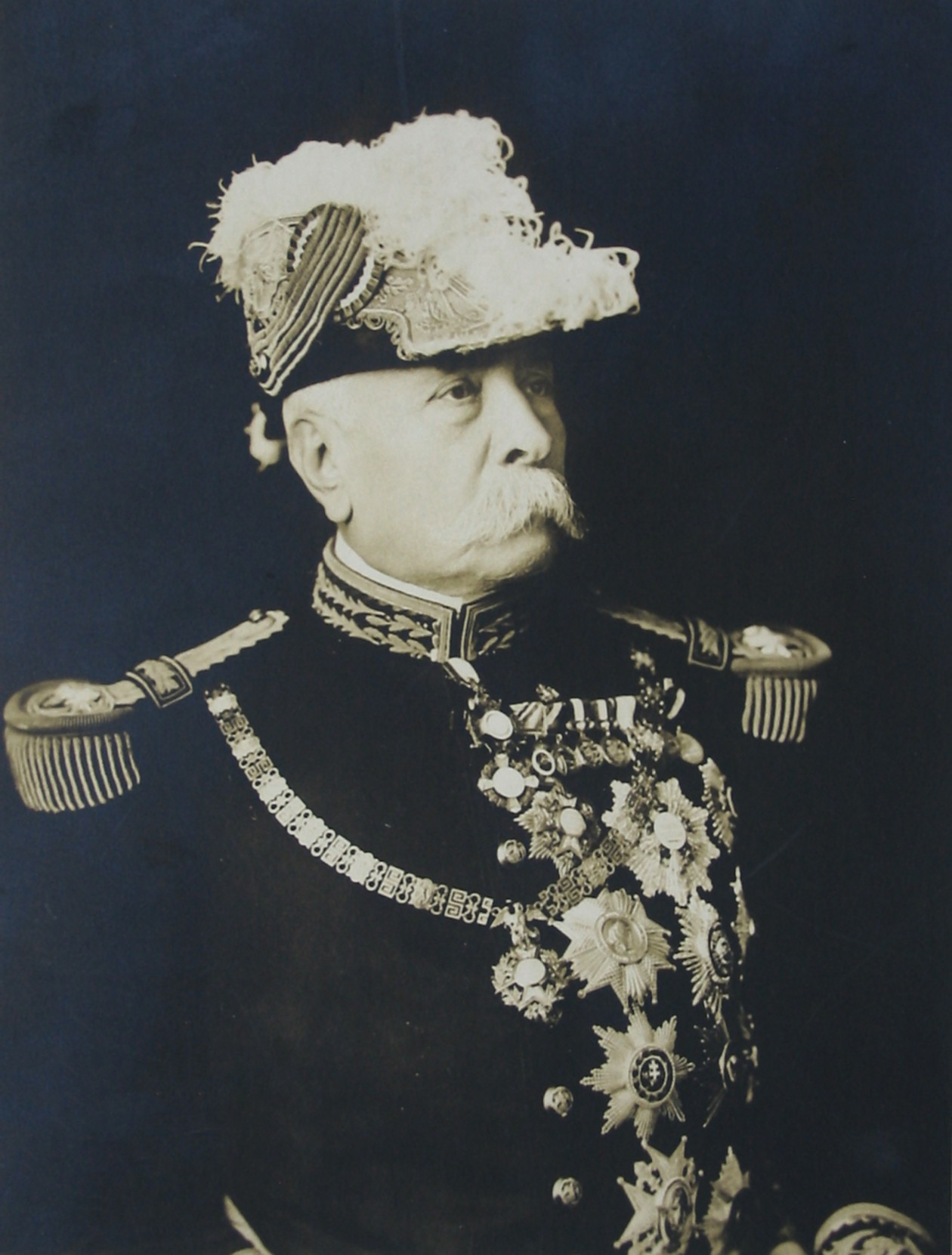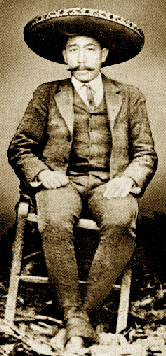|
Felipe Neri Jiménez
Felipe Neri (sometimes known as Felipe Neri Jiménez; 23 August 1884 – January 1914) was a soldier and general in the Mexican Revolution. Early life He was born in the neighborhood of Gualupita, in Cuernavaca, Morelos, on 23 August 1884, to Pedro Neri and Faustina Jiménez. Before the Mexican Revolution Felipe Neri worked as a kiln operator at a Chinameca hacienda. The Revolution He joined the rebellion in March 1911 and took part in the Battle of Cuautla. A bomb which he mis-threw exploded nearby and left him completely deaf.Samuel Brunk, ''Emiliano Zapata: revolution & betrayal in Mexico'', UNM Press, 1995, pg. 71/ref> Subsequently he served with Emiliano Zapata, Zapata as an explosives expert and divisional general. He constructed bombs for the revolutionaries out of salmon cans.Samuel Brunk, ''Emiliano Zapata: revolution & betrayal in Mexico'', UNM Press, 1995, pg. 99/ref> According to some sources the incident that took away his hearing made Neri particularly ruthless ... [...More Info...] [...Related Items...] OR: [Wikipedia] [Google] [Baidu] |
Cuernavaca
Cuernavaca (; , "near the woods" , Otomi language, Otomi: ) is the capital and largest city of the Mexican state, state of Morelos in Mexico. Along with Chalcatzingo, it is likely one of the origins of the Mesoamerica, Mesoamerican civilization. Olmec works of art, currently displayed in the Museum of Anthropology in Mexico City were found in the Gualupita III archeological site. The city is located south of Mexico City and reached via a 90-minute drive using the Mexican Federal Highway 95D, Federal Highway 95D. The name ''Cuernavaca'' is a phonaesthetics, euphonism derived from the Nahuatl toponym and means 'surrounded by or close to trees'. The name was Hispanicized to ''Cuernavaca''; Hernán Cortés called it ''Coadnabaced'' in his letters to Charles V, Holy Roman Emperor, and Bernal Díaz del Castillo used the name ''Cuautlavaca'' in his chronicles. The coat-of-arms of the municipality is based on the pre-Columbian pictograph emblem of the city that depicts a tree trunk ... [...More Info...] [...Related Items...] OR: [Wikipedia] [Google] [Baidu] |
Mark Of Cain
The curse of Cain and the mark of Cain are phrases that originated in the story of Cain and Abel in the Book of Genesis. In the stories, if someone harmed Cain, the damage would come back sevenfold. Some interpretations view this as a physical mark, whereas other interpretations see the "mark" as a sign, and not as a physical mark on Cain himself. The King James Version of the Bible reads "set a mark upon Cain". Origins There is no clear consensus as to what Cain's mark was. The word translated as "mark" iGenesis 4:15is (ōṯ''), which could mean a sign, omen, warning, remembrance, motion, gesture, agreement, miracle, wonder, or, most commonly, a letter. In the Torah, the same word is used to describe the stars as signs or omensGenesis 1:14, the rainbow as the sign of God's promise never again to destroy his creation with a Genesis flood narrative, floodGenesis 9:12, circumcision as a token of God's covenant with AbrahamGenesis 17:11, and the miracles performed by Moses bef ... [...More Info...] [...Related Items...] OR: [Wikipedia] [Google] [Baidu] |
Mexican Revolutionaries
The Mexican Revolution () was an extended sequence of armed regional conflicts in Mexico from 20 November 1910 to 1 December 1920. It has been called "the defining event of modern Mexican history". It saw the destruction of the Federal Army, its replacement by a Liberation Army of the South, revolutionary army, and the transformation of Mexican culture and Federal government of Mexico, government. The northern Constitutionalists in the Mexican Revolution, Constitutionalist faction prevailed on the battlefield and drafted the present-day Constitution of Mexico, which aimed to create a strong central government. Revolutionary generals held power from 1920 to 1940. The revolutionary conflict was primarily a civil war, but foreign powers, having important economic and strategic interests in Mexico, figured in the outcome of Mexico's power struggles; United States involvement in the Mexican Revolution, the U.S. involvement was particularly high. The conflict led to the deaths of around ... [...More Info...] [...Related Items...] OR: [Wikipedia] [Google] [Baidu] |
People From Morelos
The term "the people" refers to the public or common mass of people of a polity. As such it is a concept of human rights law, international law as well as constitutional law, particularly used for claims of popular sovereignty. In contrast, a people is any plurality of persons considered as a whole. Used in politics and law, the term "a people" refers to the collective or community of an ethnic group or nation. Concepts Legal Chapter One, Article One of the Charter of the United Nations states that "peoples" have the right to self-determination. Though the mere status as peoples and the right to self-determination, as for example in the case of Indigenous peoples (''peoples'', as in all groups of indigenous people, not merely all indigenous persons as in ''indigenous people''), does not automatically provide for independent sovereignty and therefore secession. Indeed, judge Ivor Jennings identified the inherent problems in the right of "peoples" to self-determination, as i ... [...More Info...] [...Related Items...] OR: [Wikipedia] [Google] [Baidu] |
Zapatistas (1879–1919), Mexican revolutionary
{{Disambig ...
Zapatista(s) may refer to: * Liberation Army of the South, a guerrilla force led by Emiliano Zapata in the Mexican Revolution 1911–1920 ** Zapatismo, the armed movement identified with the ideas of Emiliano Zapata * Zapatista Army of National Liberation, a group that controls territory in Chiapas, Mexico ** Neozapatismo, the political philosophy and practice of the Zapatista Army of National Liberation ** Rebel Zapatista Autonomous Municipalities in Chiapas See also *Emiliano Zapata Emiliano Zapata Salazar (; 8 August 1879 – 10 April 1919) was a Mexican revolutionary. He was a leading figure in the Mexican Revolution of 1910–1920, the main leader of the people's revolution in the Mexican state of Morelos, and the insp ... [...More Info...] [...Related Items...] OR: [Wikipedia] [Google] [Baidu] |
Mexican Soldiers
Mexican may refer to: Mexico and its culture *Being related to, from, or connected to the country of Mexico, in North America ** People *** Mexicans, inhabitants of the country Mexico and their descendants *** Mexica, ancient indigenous people of the Valley of Mexico ** Being related to the State of Mexico, one of the 32 federal entities of Mexico ** Culture of Mexico *** Mexican cuisine *** historical synonym of Nahuatl, language of the Nahua people (including the Mexica) Arts and entertainment * "The Mexican" (short story), by Jack London * "The Mexican" (song), by the band Babe Ruth * Regional Mexican, a Latin music radio format Films * ''The Mexican'' (1918 film), a German silent film * ''The Mexican'' (1955 film), a Soviet film by Vladimir Kaplunovsky based on the Jack London story, starring Georgy Vitsin * ''The Mexican'', a 2001 American comedy film directed by Gore Verbinski, starring Brad Pitt and Julia Roberts Other uses * USS ''Mexican'' (ID-1655), United State ... [...More Info...] [...Related Items...] OR: [Wikipedia] [Google] [Baidu] |
Antonio Barona Rojas
Antonio is a masculine given name of Etruscan origin deriving from the root name Antonius. It is a common name among Romance language–speaking populations as well as the Balkans and Lusophone Africa. It has been among the top 400 most popular male baby names in the United States since the late 19th century and has been among the top 200 since the mid 20th century. In the English language, it is translated as Anthony, and has some female derivatives: Antonia, Antónia, Antonieta, Antonietta, and Antonella'. It also has some male derivatives, such as Anthonio, Antón, Antò, Antonis, Antoñito, Antonino, Antonello, Tonio, Tono, Toño, Toñín, Tonino, Nantonio, Ninni, Totò, Tó, Tonini, Tony, Toni, Toninho, Toñito, and Tõnis. The Portuguese equivalent is António (Portuguese orthography) or Antônio (Brazilian Portuguese). In old Portuguese the form Antão was also used, not just to differentiate between older and younger but also between more and less important. In Galic ... [...More Info...] [...Related Items...] OR: [Wikipedia] [Google] [Baidu] |
Manuel Palafox
Manuel Palafox Ibarrola (1887 – 25 April 1959), known as El Ave Negra (), was a Mexican military who participated in the Mexican Revolution with the title of general, as well as being the trusted emissary, personal secretary and one of the most close revolutionaries to Emiliano Zapata. Early years He was born in Puebla de Zaragoza, state of Puebla, approximately in 1887, the son of Ismael Palafox and Antonia Ibarrola. He was an engineering student in his hometown and worked as a salesman and administrator for various companies in various parts of the Republic, from Oaxaca to Sinaloa. He is described as a short, thin, pockmarked man. He met Emiliano Zapata in October 1911, when he was a trusted employee at the Tenango and Santa Clara haciendas, owned by Luis García Pimentel, in whose name he made Zapata an offer. Mexican revolution He was taken prisoner but little by little he gained Zapata's trust. In the middle of 1912 he was commissioned to speak with Emilio Vázquez Gó ... [...More Info...] [...Related Items...] OR: [Wikipedia] [Google] [Baidu] |
Otilio Montaño Sánchez
Otilio Edmundo Montaño Sánchez (December 13, 1877 in Villa de Ayala, Morelos – May 18, 1917 in Buenavista de Cuéllar, Guerrero) was a Zapatista general during the Mexican Revolution. Otilio Montaño was born in Morelos to Esteban Montaño and Guadalupe Sánchez in 1877. After finishing his studies in Cuautla he taught in schools in Tepalcingo, Jonacatepec and finally Ayala. In Yautepec he became acquainted with Emiliano Zapata's cousin, Amador Salazar. In 1910 he supported Francisco Madero in his struggle against Porfirio Díaz and eventually joined Felipe Neri and Amador Salazar in forming the Zapatista agrarian movement in Morelos. Because Montaño had some schooling and had worked as a school teacher, he was considered by the peasants of Morelos, who comprised the majority of Zapatista soldiers, as an "intellectual".Samuel Brunk, "Emiliano Zapata: revolution & betrayal in Mexico", UNM Press, 1995, pg. 266/ref> After Zapata broke with Madero, Otilio Montaño remaine ... [...More Info...] [...Related Items...] OR: [Wikipedia] [Google] [Baidu] |
Amador Salazar
Amador Salazar Jiménez (30 April 1868 – 16 April 1916) was a Mexican military leader who participated in the Mexican Revolution. Early life He was born in Cuernavaca, Morelos on April 30, 1868, as the son of León Salazar and Gertrudes Jiménez.Bibliotecas Virtuales de Mexico, "Amador Salazar Jimenez" 1868-1916", quoting Valentín López González, "Los Compañeros de Zapata", 1980, He was also a cousin of Emiliano Zapata,Samuel Brunk, "Emiliano Zapata: Revolution & Betrayal in Mexico", UNM Press, 1995, pg. 190/ref> as his father was brother to Zapata's mother, Doña Cleofas Salazar. Before the outbreak of the revolution, Salazar worked as a laborer on the estate of the governor of Morelos and chief of staff to Porfirio Díaz, Pablo Escandón y Barrón. There, between 1903 and 1905, he helped local villagers organize in their disputes against Escandón, which led to him being drafted into the Mexican army for troublemaking. He was sent to the Riflemen's School in Mexico City. ... [...More Info...] [...Related Items...] OR: [Wikipedia] [Google] [Baidu] |
Genovevo De La O
Genovevo de la O (January 3, 1876 – June 12, 1952) was an important figure in the Mexican Revolution in Morelos. He was born in Santa María Ahuacatitlán, Morelos,Genovevo de la O accessed Dec 28, 2018 to sharecropper parents. He was dedicated to the plight of Mexico's peasants and came to be an outstanding Liberation Army of the South guerrilla general. After Emiliano Zapata's death, he and the other guerrillas threw their lot in with Álvaro Obregón and went on to become a minor but long-lasting figure in national politics. Early life From his earliest days, de la O stood out as a defender of his hometown and its people. He fought ceaselessly against the encroachments of the neighboring hacienda of Temixco, against deforestation, and against land dispossession in general. These crusades brought him into conflict with the law of Porfirio Díaz's regime, which sought to strengthen the hacendados at the expense of commoners. De la O grew to hate the Díaz regime, ... [...More Info...] [...Related Items...] OR: [Wikipedia] [Google] [Baidu] |
Eufemio Zapata
Eufemio Zapata Salazar (1873 in Ciudad Ayala – June 18, 1917, in Cuautla, Morelos) was a participant in the Mexican Revolution and the brother of Mexican revolutionary Emiliano Zapata. He was known as a womanizer, a macho man, and a very heavy drinker. Military Service Born in 1873 in Villa de Ayala, Morelos, Eufemio Zapata was the son of Gabriel Zapata and Cleofas Salazar and the brother of Emiliano Zapata. After completing his primary education in his hometown, he dedicated himself to various businesses in Veracruz, where he was a peddler, reseller and merchant, among other things. In 1911, he returned to the state of Morelos, where he joined the Maderista movement, led by Pablo Torres Burgos and his brother Emiliano to fight the dictator Porfirio Díaz. In May of that year, he participated in the siege and capture of Cuautla and rose to the rank of colonel. In August, he was commissioned by his brother Emiliano Zapata to meet and finalize an agreement with Francisco ... [...More Info...] [...Related Items...] OR: [Wikipedia] [Google] [Baidu] |



